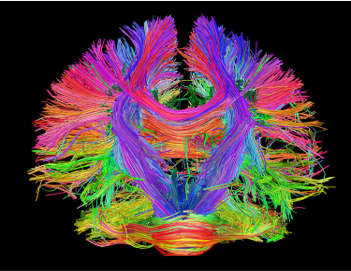Experimenting with human controlled rapid prototyping through additive processes. Using the 3D Doodler to create a freeform vessel.
Inspirational imagery

Vessel Definitions
a curved container that is used to hold liquid:
The remains of some Roman earthenware vessels were found during the dig.
a tube that carries liquids such as blood through the body:
A heart attack is caused by the blood vessels that supply the blood to the heart muscle getting blocked.
a person [object or entity] who has a particular quality or who is used for a particular purpose:
As a young and spirited politician, he seems a worthy vessel for the nation’s hopes.
Rapid Prototyping
Prototyping without supportive structure

1 
2 
3 
4
Prototyping with different supportive structures

5 
6 
7 
8 
9 
10 
11
In my initial prototyping (images 5 & 6), I explored tight squiggle patterns using a glass dish as a support structure. The 3D print material flowed inconsistently through the Doodler pen, which helped create a pleasing random freeform effect.
Happy with my first attempt, I decided to try using the 3D Doodler without supportive structures (images 1-4). The pen did not work well to create structured shapes without any support or guide. I created individual circles on the plastic mat (image 1), using the squares on the mat to make the circles uniform. Next, I used the 3d pen to adhere the circles together to create a form (image 2). This ‘gluing’ process was slow and cumbersome. In my final freeform efforts, I extended the form by printing vertically (without support). The inconsistent speed of the material coming through the pen meant the material did not cool and harden in a uniform way (image 3).
In my next attempt, I used a tall glass to support the material while it cooled and hardened (image 6). Using a glass for support meant the printed shape replicated the shape of the glass. However, the shape of this particular glass snapped the form slightly when I removed the support. I did some repair work with superglue (image 8).
In my last attempt, (images 7,8 &10) I used a different glass and combined three different coloured materials and three different techniques. For the grey material at the base of the vessel, I used freeform squiggles. I created an open area by using straight vertical supports (in red). I then used a spiral technique to build the basket effect (also in red). I topped the glass in white material, again using the squiggle method (as in image 4).

Future Exploration

When thinking about vessels, the forms the 3D doodler creates, and my interest in neurodiversity, I started to wonder about 3D printing the connections in the human brain.
I did some research and discovered The Human Connectome Project, which aims to “map the brain structure and its connectivity to superfine detail” (Oh, 2014). I also found a study by Vanderbilt Peabody College, which suggests that children with dyslexia may have different brain structures (Dyslexic.com, 2016).
I think it would be interesting to scan a variety of peoples’ brains and 3D print them in a series. This series of 3D models could visually represent the beauty of neurodiversity, which is often concealed within our grey matter.
References Cited
Dyslexic.com, 2016. Brain structure could be different in dyslexic children. [Online]
Available at: https://www.dyslexic.com/blog/brain-structure-could-be-different-in-dyslexic-children/
[Accessed 08 12 2020].
Oh, J., 2014. Mapping the Human Brain to Understand the Human Mind. [Online]
Available at: http://thinktank.uchicago.edu/blog/2014/1/8/mapping-the-human-brain-to-understand-the-human-mind
[Accessed 08 12 2020].
Image References
David Bitton Design, 2020. Abbracciame 3D printed vase. [Online]
Available at: https://davidbittondesign.com/product/abbracciame/
[Accessed 2020].
Dezeen, 2014. Lix 3D-printing pen allows users to create solid drawings in the air. [Online]
Available at: https://www.dezeen.com/2014/05/01/lix-smallest-3d-printing-pen-aluminium/
[Accessed 2020].
Imgur, 2016. More projects combining 3D printing with a 3D pen. [Online]
Available at: https://imgur.com/r/3Dprinting/g8PHA
[Accessed 2020].
LIX PEN, 2018. How to make 3D vase decoration – 3D PEN Tutorial. [Online]
Available at: https://www.youtube.com/watch?v=h92t7ikqqXE
[Accessed 2020].
Oh, J., 2014. Mapping the Human Brain to Understand the Human Mind. [Online]
Available at: http://thinktank.uchicago.edu/blog/2014/1/8/mapping-the-human-brain-to-understand-the-human-mind
[Accessed 08 12 2020].
Pinterest, 2020. 3d pen creations. [Online]
Available at: https://www.pinterest.es/pin/6122149476860866/
[Accessed 2020].
